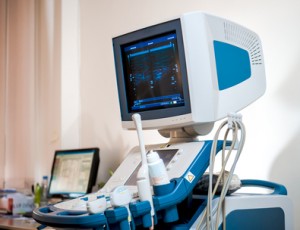Membrane switch assemblies are sought-after components for modern product design, providing a sophisticated and visually appealing user interface that’s both intuitive and functionally sound. But some products are intended for use in harsh or less-than-ideal environments than the typical electronics application, which leads to further design considerations. Here’s a look at membrane switch technology considerations for harsh applications.
Some Membrane Switch Technologies Offer Limited Protection
Membrane switches consist of a series of layers, each layer serving a different purpose. The graphic overlay is the top layer of a typical membrane switch assembly, and while it does offer some protection for the layers beneath it, problems can still exist in certain conditions. Likewise, the pressure-sensitive adhesive that adheres the graphic overlay to the underlying layers, depending on the specific adhesive used, can provide limited sealing properties to the layers below – but not adequate protection for truly harsh working environments.
For instance, a graphic overlay, and the pressure-sensitive adhesive below it, to a limited extent, protects the underlying layers by preventing drops of liquid or dust from entering the critical switch components that are more sensitive to exposure. But this configuration can lead to problems in certain conditions, such as if a device is submerged in liquid, as the graphic overlay doesn’t have protection around the edges.
Elements and Conditions of Concern for Membrane Switch Technologies
There are several elements and environmental conditions that can cause potential problems for membrane switch
technologies, including:
- Contact with liquids, either through spray, droplets, or submersion
- Dust and debris, often a problem for devices used outdoors
- Caustic solutions, such as certain cleaning solutions or chemicals
- Extreme humidity
- Extreme temperatures, both hot and cold
- Atmospheric pressure at high altitudes
These elements and conditions can impair the functionality of a device or product temporarily, and rectifying the conditions may resolve functional issues in some cases – but not all. After repeated or extended exposure to some of these elements or climate conditions, damage may be too extensive for the membrane switch to recover.
For this reason, membrane switch technologies are best designed with the typical usage conditions as well as the most common potential harsh conditions a device may realistically be exposed to. For example, even the most cautious user can spill a beverage on a device, so membrane switch technologies capable of withstanding at least occasional or minimal hazards are ideal for most typical applications.
Membrane Switch Technologies Subject to Common Failures in Harsh Conditions
If your product isn’t intended for a typical application in which it will be exposed to harsh conditions, the typical membrane switch technologies will likely be sufficient for your application. There’s a small chance that any product can be exposed to harmful conditions due to accidental drops and other circumstances. (Think about the number of people you know who have ever dropped a mobile device in a lake, ocean, river, or even the toilet, or the example above in which the user accidentally spills a beverage on a device.)
There are a few common complications that can arise for membrane switch technologies from accidental exposure to harsh conditions. Certain cleaning solutions can create problems for some graphic overlays, for instance, and submersion of a membrane switch assembly in water or other liquid can cause discoloration of the top graphics layer. Submersion can also impact the integrity of some pressure-sensitive adhesives, leaving a gap for other elements such as dust to reach the underlying layers and damage critical functional components.
Things like water vapor transmission and electrostatic discharge can also damage the integrity of some pressure-sensitive adhesives. Even environmental pressure differences due to elevation can create some problems with the adhesive that secures membrane switch technologies. Ultimately, repeated or extended exposure to less-than-ideal conditions can lead to device failures and functional decline, a serious problem for both product manufacturers offering product warranties as well as users.
Choosing the Right Materials is Key in Designing Membrane Switch Technologies
Much of the process in designing membrane switch technologies for harsh environments involves selecting the appropriate materials and components to provide the protection necessary to ensure the integrity of each component within the membrane switch assembly.
The key considerations are choosing durable materials for the graphic overlay and selecting pressure-sensitive adhesives with the ability to withstand potential contaminants and other elements that could impact performance. A special adhesive sealing process can also be used to create an impervious bond that’s unaffected by the harsh conditions that would ordinarily cause device failure.
There are a range of options when it comes to durable materials and components capable of standing up in harsh, abusive, or rugged environments. For some applications, silicone rubber keypads provide an adequate seal to protect delicate underlying components from potential liquid damage resulting from spills or outdoor use in rain or snow. Additionally, some membrane switch technologies provide exceptional water resistance, even meeting NEMA 4 and IP 67 specifications.
Special Considerations for Membrane Switch Technologies for Medical Devices
In the medical industry, devices are everywhere – many of them dependent on membrane switch technology to provide critical care to patients. When it comes to products like medical devices, failure is not acceptable, and harsh cleaners are often used to adequately sanitize equipment in hospitals, clinics, and other healthcare settings to avoid the spread of germs.
Fortunately, some membrane switch technologies accommodate this need, with a textured polyester graphic overlay component that can incorporate antimicrobial products to aid with sanitation while simultaneously providing a durable overlay that holds up to repeated, frequent exposure to harsh cleaning solutions. Not only are these specially designed graphic overlays durable, but the antimicrobial product helps prevent the growth of mold, bacteria, and mildew that can cause a typical graphic overlay to degrade, as well as lead to odors and stains.
It’s not uncommon for membrane switch technologies to be required in environments and applications with less-than-ideal conditions. Where electronics devices would never have stood a chance a few decades ago, modern membrane switch technologies have adapted to provide the rugged durability required to withstand even the harshest operating conditions. Communicating both the typical and potential hazards your product may be exposed to will help your membrane switch engineering team recommend the best, most durable components and materials to ensure the lasting success of your product.
Looking for membrane switch product samples or would you like to set up a free design consultation? You can call us directly by phone (216) 475-6704 or email Customer_Service@Pannam.com



